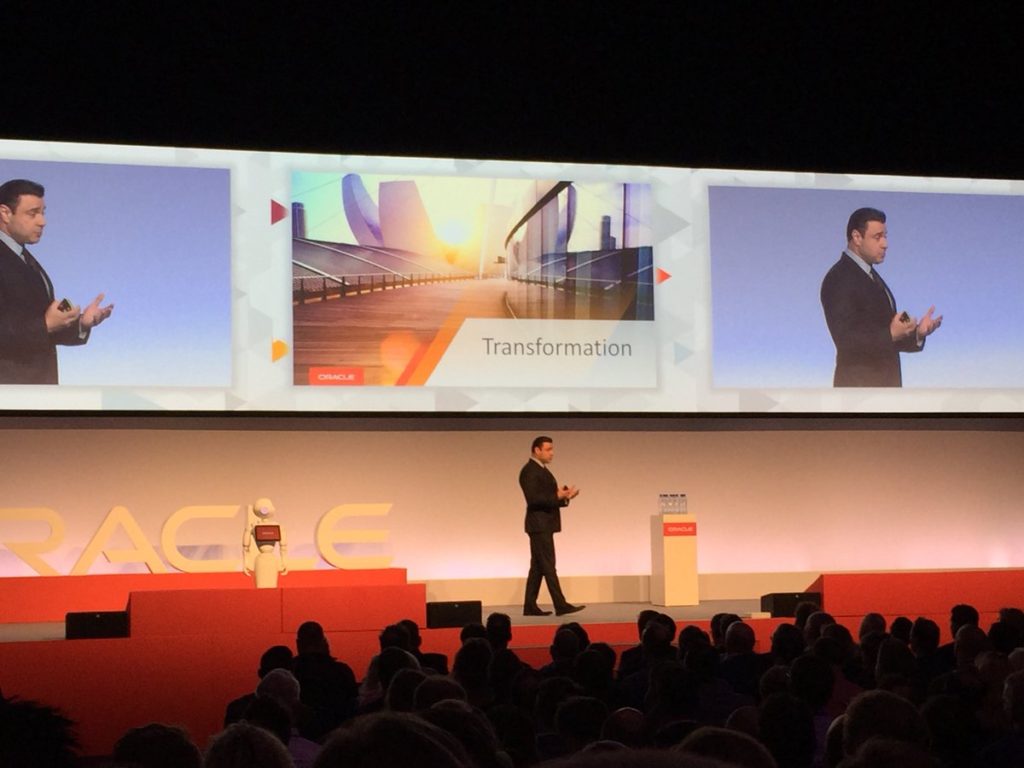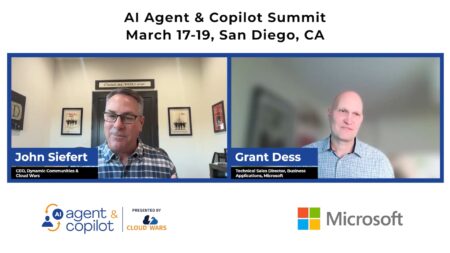By playing in all three layers of the cloud and offering a fully autonomous cloud database, Oracle’s betting it can help customers do things they were never able to do before while accelerating operations, reducing cost and reducing risk.
“We’re starting to see things at this tipping point, that point after which unstoppable change occurs,” said Oracle Cloud senior vice-president Steve Daheb in a recent Cloud Wars Live podcast episode.
“The real promise of these technologies, whether they’re AI or machine learning or blockchain or human interfaces or IOT is to allow us to innovate in ways we couldn’t before.”
That’s the fundamental premise of the Oracle Cloud strategy as outlined by Daheb in a recent interview for our Cloud Wars Top 10 Executive Insights series, which profiles the strategy and market outlook for each company in our Cloud Wars Top 10 ranking.
Oracle’s ranked at #6 on our list and brings with it a blend of high-performing cloud services in some areas (SaaS), some high-potential extensions of its core technology (Oracle Autonomous Database), and some long-range plans to find unique ways to compete with IaaS leaders Amazon and Microsoft.
The high-energy Daheb addressed all of those opportunities in our “Executive Insights” episode, and you can watch that lively discussion here or listen to it here.
To give you a sense of Daheb’s vision for Oracle’s opportunities in the cloud, here are a few of the most-compelling excerpts from our interview.
The Tipping Point: Digital Transformation
“What we’re seeing is this tipping point where enterprises are starting to adopt emerging technologies faster than we’ve seen in the, sort of in the commodity market, in the end user market, in the commercial market. And I think they’re looking for these technologies to really help them change how they drive business,
change how they innovate and change how they contrive different experiences with their, either their employees or their customers. And so these things are moving out of the lab. They’re moving out of the sandbox. And customers are really looking to deploy mission critical applications using this technology.”
Hyper-Acceleration: Customer Processes Surge from Weeks to Minutes.
“Hertz can talk about how the provisioning of a database used to take them 8-10 weeks. With Autonomous Database, they can now do it in eight minutes now. And so they talk about how we take those resources and time and we focus that on being more competitive.
“And we have a Dallas-based customer called QMP that’s in the lab-management business, and were dealing with the hard issue of getting lab results in a more timely fashion. If you went and had your blood drawn or had lab results taken, they usually take about two weeks. But now that they use our Autonomous Database, athey took that time down from 2 weeks to 37 minutes. That sort of faster time to diagnosis means faster time to prescribing how to deal with the problem to faster time to recovery. And this type of innovation has real impact not only in the healthcare industry but especially on the people they serve. So we’re seeing some really interesting fundamental breakthroughs for companies of all sizes leveraging this new technology.”
Flipping the IT-Budget Ratio for More Innovation, Less Maintenance.
With Autonomous Database, “We believe you save about 80% of the time you would have spent on setting up and provisioning a database. I had a marketing intern set up a database in two minutes—a data warehouse in two minutes! So, that’s a game-changer.
“And then what we’re finding is people are taking the time that would have been spent on that and saying, ‘Let me take my DBAs and align them closer to the lines of business. Or ‘How can we get better analytics within our HR department or our marketing department or sales department? How do we save this time and focus more on app development than on sort of tuning and being in performance management?’ So we’re seeing a fundamental change in business so that it’s not only faster, but it also gives you faster time to insights. And again, it allows you to flip the status quo of the 80% that’s spent today on maintenance and maybe only 20% on innovation.”
Follow the Customer: Blurring the Lines Across SaaS, PaaS and IaaS.
“Where do apps stop and platform begins? At the end of the day I move an app to cloud. Well where does integration come in? It’s either connect that to multi-cloud or connect that application back to what I have on-prem. Or as I move things to cloud—and again I might have multi-cloud, heterogeneous, hybrid—how do I protect those things? Well, maybe secure ID access management—that spans everything I need. Or how do I think about doing analytics across multiple applications?
“I think what we’re finding is one of the reasons we sort of have a strategy of having traditional SaaS applications as well as traditional platform applications like database integration, analytics, security as well as a foundational infrastructure to run on is because for customer solutions, the lines aren’t drawn that firmly. There is a little bit of a blurring. It’s not like, oh shoot, you just move that app to cloud—you’ve probably got to go somebody else to work on the integration. Or, ‘oh man, you want to do analytics across all these different heterogeneous apps? Hey, you know, you know, that ain’t my problem.’ In today’s world, you just can’t operate like that.”
Watch or stream the full episode with Oracle Cloud senior VP Steve Daheb here.
Disclosure: at the time of this writing, Oracle was a client of Evans Strategic Communications LLC.
Subscribe to the Cloud Wars Newsletter for in-depth analysis of the major cloud vendors from the perspective of business customers. It’s free, it’s exclusive, and it’s great!








